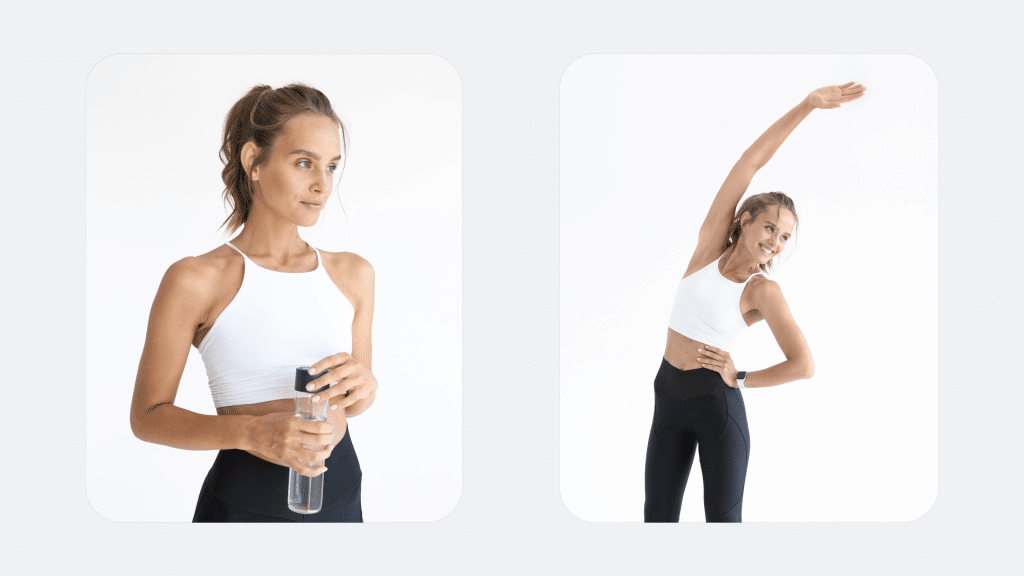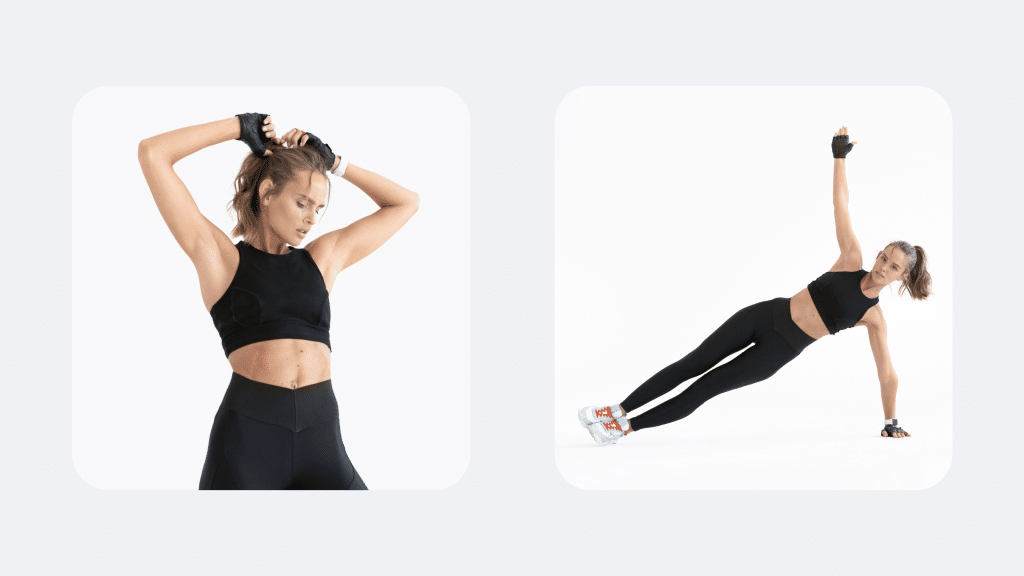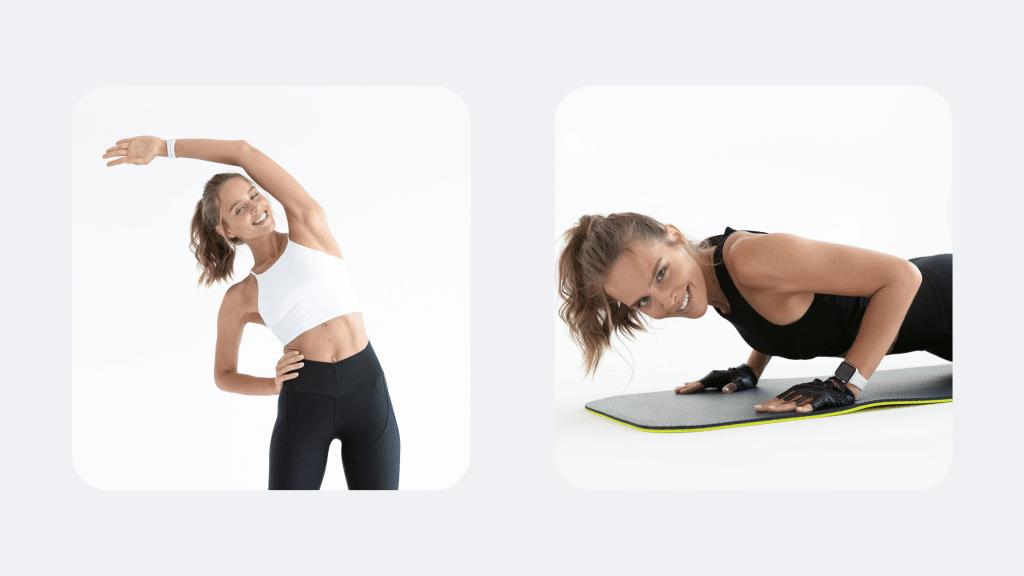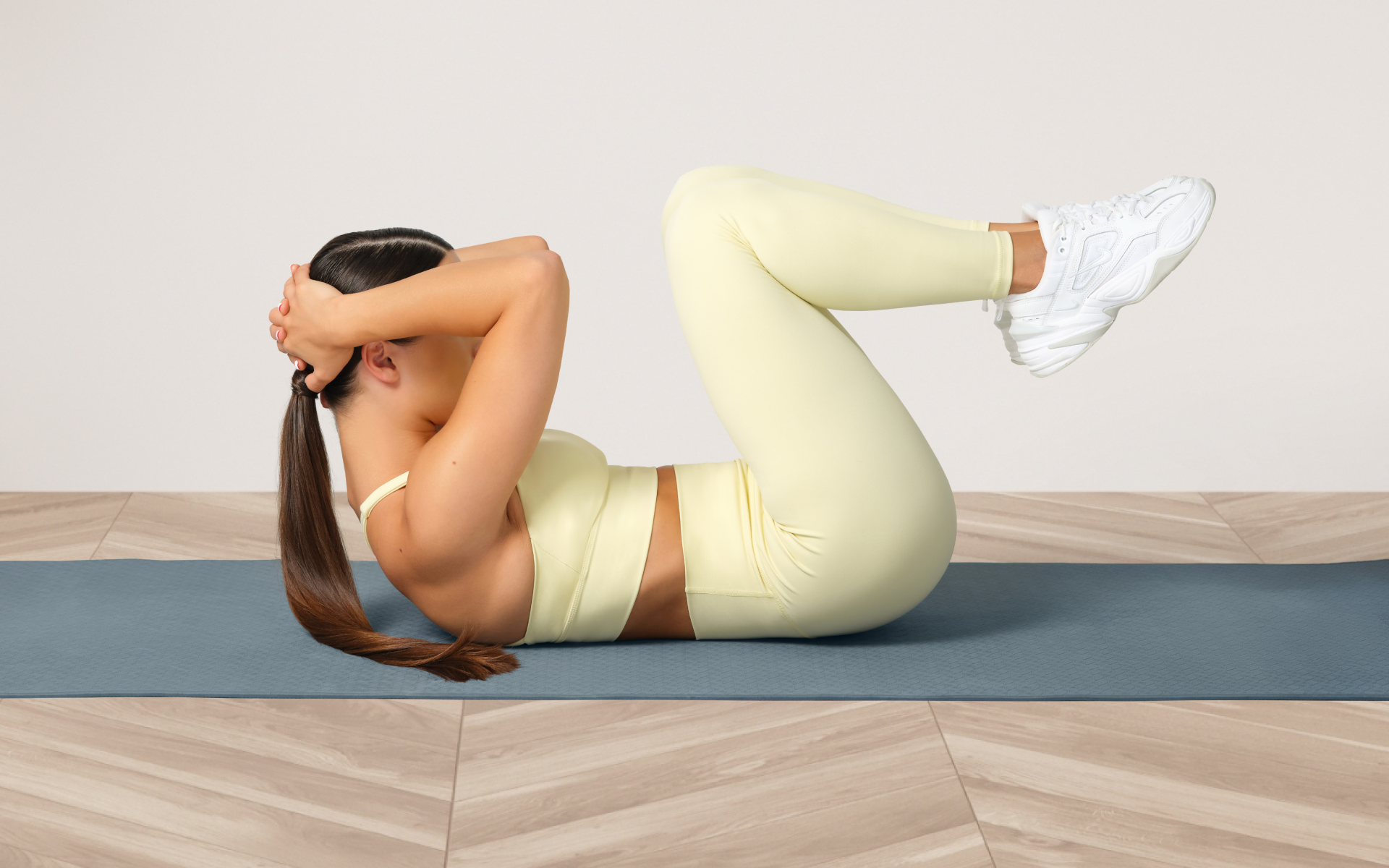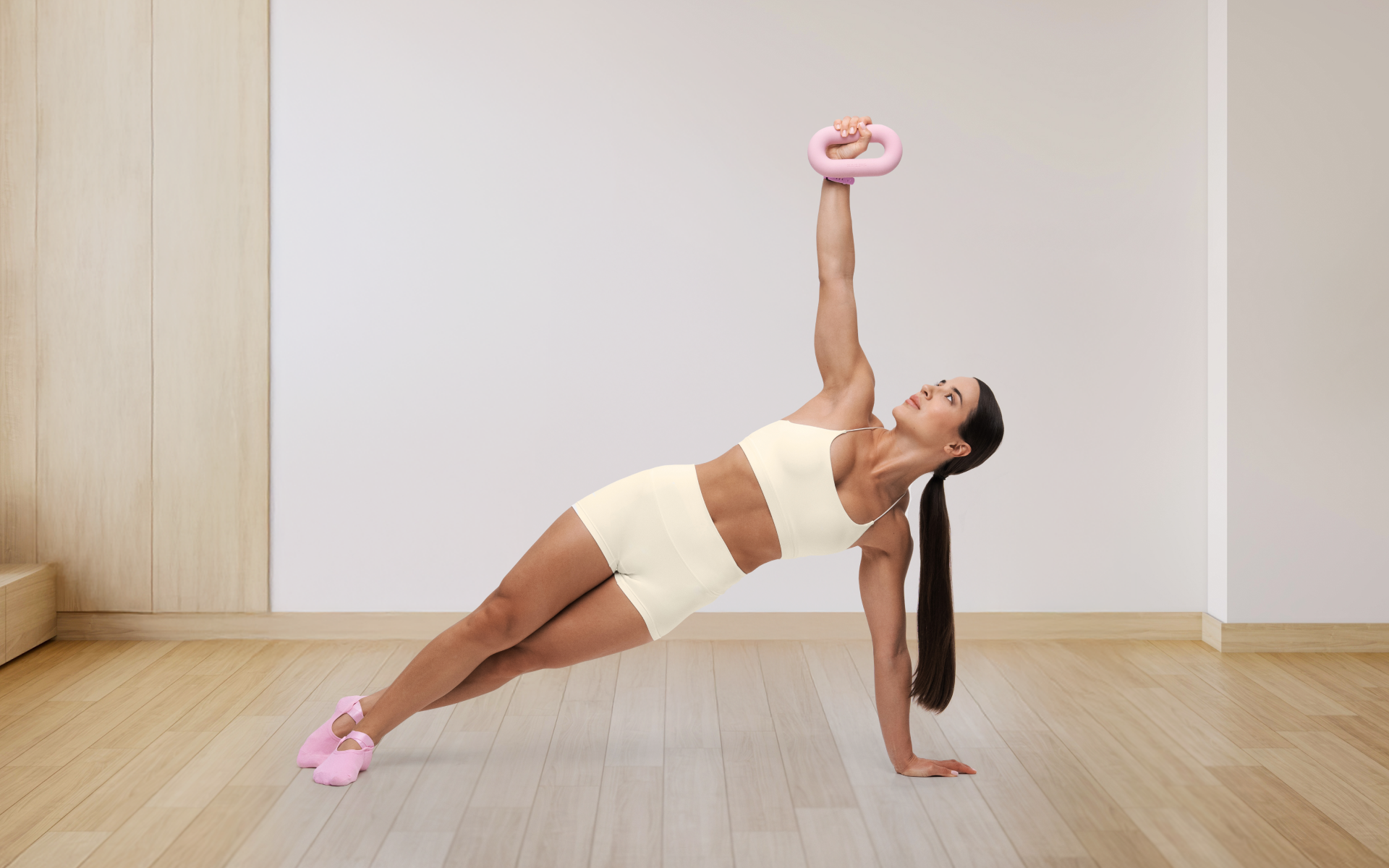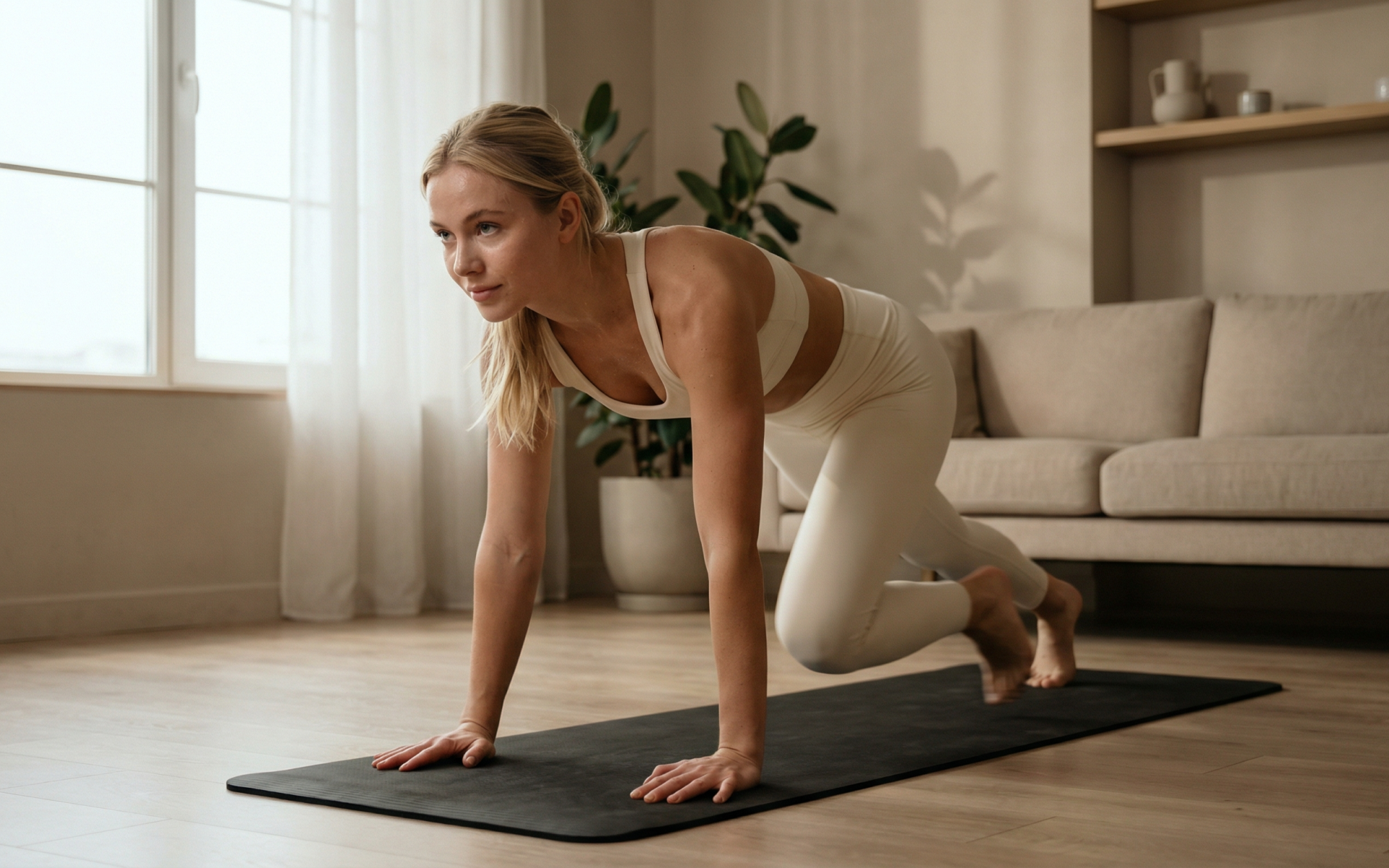Core strength refers to your body’s core muscles, including those in your abdomen, back, hips, and pelvis, working together effectively to provide stability and support for your entire body. These muscles play a vital role in everyday movements such as bending, twisting, lifting, and maintaining proper posture.
A strong core is more about function than aesthetics. While having a six-pack may look impressive, the real benefit of a strong core lies in its ability to improve overall physical performance and reduce the risk of injury (1).
Whether you are an athlete looking to enhance your performance or improve bodily functions during daily activities, here’s what you need to know.
Is Core Strength Hard to Build?
Building core strength is relatively easy but requires consistency and the right approach.
You might find it challenging to achieve a strong core if:
- You don’t know which muscles to target
- You have poor posture or muscle imbalances
- You have a sedentary lifestyle with minimal physical activity
- You perform exercises incorrectly
- You have weak back muscles or suffer from chronic back pain
- You are recovering from an injury or surgery that affected your core muscles
On the other hand, building core strength becomes easier when you:
- Understand the muscles involved in your core and how they work together
- Address any postural issues or muscle imbalances through proper exercise selection and form
- Incorporate regular physical activity into your daily routine
- Focus on proper technique rather than just intensity or volume of exercises
- Consult with a healthcare professional or physical therapist to address any injuries or limitations
How Do You Build a Strong Core from Nothing?
Here are some critical steps to building core strength from scratch:
Step 1: Understand the Muscles Involved in Your Core and How They Work Together
You must understand which muscles you’re dealing with to build core strength. Your core isn’t just about those “abs” you hear everyone discussing.
It includes a group of muscles such as the rectus abdominis, transverse abdominis, obliques, and even muscles in your back, like the erector spinae.
By understanding these muscles’ functions and how they work together to stabilize your frame, you’ll be better prepared for the exercises.
Here’s a brief overview of the core muscles and their roles:
- Rectus abdominis: The most superficial muscle in your abdomen, responsible for flexing your spine and creating that “six-pack” look.
- Transverse abdominis: The deep muscle below your rectus abdominis that acts as a natural corset, supporting your internal organs and aiding in breathing and posture.
- Obliques: These muscles run along the sides of your waist and help with rotation and lateral movement of your torso.
- Erector spinae: These are a group of muscles that run along your spine from the base of your skull to the pelvis. They support the back’s stability and assist in bending or rotating your spine.
Whether you’re a workout beast or just a beginner making your first foray into the world of fitness and dieting – BetterMe has a lot to offer to both newbies and experts! Install the app and experience the versatility first-hand!
Step 2: Address Any Postural Issues or Muscle Imbalances Through Proper Exercise Selection and Form
Once you’re familiar with the core muscles, it’s time to think about posture and balance. Poor posture or muscle imbalances can be significant roadblocks to gaining core strength.
Postural variation throughout the day is one way to improve core strength. For example, if you spend most of your day sitting at a desk, stand up and move around every hour.
Muscle imbalances can also limit your ability to build a strong core (2). For instance, having weak glute muscles may cause your hip flexors to compensate, leading to lower back pain and limiting the effectiveness of core workouts.
To address these issues, consult with a qualified fitness professional who can create an exercise program tailored to your needs. They will help you target specific muscles and correct imbalances through proper exercise selection and form. Ensure you understand how to perform exercises correctly to reduce the likelihood of injuries.
Read more: 9 Deep Core Exercises for a Smaller Waist
Step 3: Incorporate Regular Physical Activity into Your Daily Routine
Engage your core muscles consistently. It doesn’t mean you need to do a full-on workout every day, but fitting in core activities a few minutes at a time can make a big difference.
Walking, climbing stairs, and standing up from a chair involve core engagement.
Try setting reminders to stand and stretch every hour or swap sitting on a chair for a stability ball sometimes. These small changes cultivate a habit of motion that adds up over time, contributing to a stronger core.
Step 4: Focus on Proper Technique Rather Than Just Intensity or Volume of Exercises
Many people mistakenly believe they need to push themselves to extreme levels to get results. However, when building a solid core, technique is the priority. Concentrate on the quality of each movement.
Engage your mind when exercising; strive for precision.
Slow down and breathe.
Each rep should feel controlled and deliberate. This approach not only develops your core more effectively but also helps prevent injuries that come from misalignment or overexertion.
Step 5: Consult with a Healthcare Professional or Physical Therapist to Address Any Injuries or Limitations
Finally, if you’re concerned about injuries or limitations, it’s wise to consult with a healthcare professional or physical therapist.
These experts can provide personalized advice, ensuring your exercises accommodate any specific needs you may have. They can address chronic pain issues or post-surgery recoveries, guiding you safely on your journey to a stronger core.
A tailored approach can make all the difference in achieving your goals without setbacks.
Best Core Strength Exercises to Try
1. Plank
Instructions:
- Begin on all fours, aligning your shoulders directly above your wrists and your hips above your knees.
- Extend your legs back one at a time, balancing on your toes and forearms or hands.
- Keep your body straight from head to heels, engaging your core and glutes.
- Hold the position for 20-60 seconds, breathing in through your chest and out through your stomach. Each breath out will engage your abs even further.
Tips:
- Avoid sagging your hips or raising them too high.
- Keep your neck neutral, looking slightly ahead of your hands.
Variations:
- For beginners, perform a knee plank, keeping your knees on the ground.
- Try a side plank or lift one leg or arm for added challenge.
2. Bridge
Instructions:
- Lie on your back with knees bent and feet flat on the floor, hip-width apart.
- Place your arms at your sides, palms down.
- Engage your core and lift your hips toward the ceiling until your body forms a straight line from shoulders to knees.
- Hold for a few seconds, then slowly lower back down.
Tips:
- Keep your shoulders and neck relaxed on the ground.
- Avoid arching your lower back too much.
Variations:
- Try a single-leg bridge to increase difficulty by extending one leg while lifting your hips.
3. Dead Bug
Instructions:
- Lie on your back with arms extended toward the ceiling and knees bent at 90 degrees.
- Engage your core and slowly lower your right arm and left leg toward the floor simultaneously.
- Return to the starting position and repeat on the opposite side.
Tips:
- Keep your lower back pressed into the ground.
- Move slowly and with control.
Variations:
- For beginners, perform the movements with only arms or legs at a time.
4. Bird Dog
Instructions:
- Begin on all fours with hands directly under shoulders and knees under hips.
- Extend your right arm forward and left leg back, keeping your body straight.
- Hold briefly, then return to start and switch sides.
Tips:
- Keep your hips level and avoid arching your back.
- Focus on balance and control.
Variations:
- For a challenge, perform the exercise with a stability ball under your abdomen.
5. Russian Twist
Instructions:
- Sit on the floor with knees bent and feet lifted off the ground.
- Lean back slightly and clasp your hands together.
- Twist your torso to the right, bringing your hands beside your hip.
- Return to the center and twist to the left.
Tips:
- Keep your back straight and core engaged.
- Move your arms, not just your shoulders, for a full twist.
Variations:
- Hold a weight or medicine ball for added resistance.
6. Side Plank
Instructions:
- Lie on your side with your legs extended, stacking your feet.
- Prop up on your elbow, aligning it under your shoulder.
- Lift your hips, forming a straight line from head to feet.
- Hold the position, then switch sides.
Tips:
- Keep your hips raised and your body aligned.
- Engage your obliques for stability.
Variations:
- Beginners can bend the knee closest to the ground for a modified side plank.
7. Pelvic Tilt
Instructions:
- Lie on your back with your knees bent and feet flat on the floor.
- Engage your core and flatten your lower back against the ground by tilting your pelvis.
- Hold for a few seconds, then release.
Tips:
- Focus on using your abdominal muscles to tilt.
- Avoid pushing with your legs or buttocks.
Variations:
- Perform the tilt with a slight bridge to engage the glutes.
8. Seated Marching
Instructions:
- Sit on a chair with feet flat on the floor and back straight.
- Engage your core and lift one knee toward your chest.
- Lower and repeat with the other leg in a marching motion.
Tips:
- Keep your back straight and avoid leaning back.
- Move slowly and with control.
Variations:
- Increase speed slightly for a cardio effect.
9. Superman
Instructions:
- Lie face down with arms extended overhead and legs straight.
- Engage your core and lift your arms, chest, and legs off the ground simultaneously.
- Hold for a few seconds, then lower.
Tips:
- Keep your neck in a neutral position.
- Focus on lifting with your back and glutes.
Variations:
- Lift the opposite arm and leg for a modified version.
10. Swiss Ball Rollout
Instructions:
- Kneel in front of a Swiss ball with forearms resting on the ball.
- Roll the ball forward by extending your arms and body, keeping your core tight.
- Roll back to the starting position.
Tips:
- Keep your back straight throughout the movement.
- Avoid sagging your hips.
Variations:
- Start with small movements and gradually increase the range as you get stronger.
How Long Does It Take to Build Core Strength?
Building core strength can vary in duration depending on several factors, including exercise frequency, intensity, and an individual’s starting fitness level.
Research suggests that you can see noticeable improvements in core strength within four to eight weeks of consistent training (3).
For beginners, engaging in core exercises two to three times a week with gradual increases in intensity can lead to significant strength gains over this period.
More advanced individuals require more intense or varied routines to continue seeing progress.
Milestones often cited in fitness research include holding a plank for longer durations or performing more advanced movements with proper form, indicating enhanced core stability and strength.
As with any fitness goal, individual results can vary, and maintaining consistency and proper technique is crucial for achieving desired outcomes.
BetterMe: Health Coaching app helps you achieve your body goals with ease and efficiency by helping to choose proper meal plans and effective workouts. Start using our app and you will see good results in a short time.
How To Quickly Build Core Strength?
Building core strength takes time; there is no quick fix. However, there are a few strategies you can incorporate to help expedite the process:
- Incorporate Core-Specific Exercises: Focus on exercises that target the core muscles effectively, such as planks, Russian twists, sit-ups, and leg raises. These exercises engage multiple muscles in the core and can lead to faster strength gains.
- Increase Frequency and Intensity: Aim to perform core exercises at least three to four times a week. Start with moderate intensity and gradually increase the difficulty by adding weights or trying more advanced variations, like side planks or hanging leg raises.
- Focus on Proper Form: Ensure you maintain correct posture and engage the proper muscles during exercises. Poor form can lead to injuries and reduce the effectiveness of your workouts (4).
- Utilize Progressive Overload: Gradually increase the demands on your core muscles by extending the duration of exercises like planks or increasing the weight resistance in exercises like Russian twists. This approach helps continually challenge the muscles (5).
- Incorporate Variety in Workouts: Mix different core exercises to target all the muscle groups within the core. These variations prevent boredom and ensure balanced muscle development.
- Nutrition and Hydration: Support your core training with a balanced protein, healthy fats, and carbohydrates diet. Stay hydrated to aid muscle recovery and performance.
- Get Adequate Rest: Allow your muscles to recover by getting enough sleep and taking rest days between intense workouts. Recovery is essential for muscle growth and strength development (6).
- Engage in Functional Movements: Include exercises like kettlebell swings or medicine ball throws incorporating core stability in dynamic movements, enhancing core strength in functional settings.
Read more: Floor Mat Exercises for Any Fitness Level
Why Do I Have No Core Strength?
Having no core strength can be attributed to several common factors that can affect your physical health and well-being:
- Lack of Exercise: Not engaging in regular physical activity is one of the primary reasons for weak core muscles (7). You need to exercise your core consistently to develop strength and stability.
- Sedentary Lifestyle: Spending prolonged periods sitting or being inactive can lead to muscle atrophy, where core muscles weaken due to lack of use. This lifestyle can also contribute to weight gain, putting additional strain on the core (7).
- Poor Posture: Slouching or maintaining poor posture while sitting or standing can prevent core muscles from adequately engaging. Over time, this can lead to muscle imbalances and weakening of the core (8).
- Muscle Imbalances: Focusing too much on specific muscle groups while neglecting others can result in imbalances. For example, overdeveloping the back muscles without equally strengthening the abdominal muscles can lead to core instability (9).
- Inadequate Nutrition: A diet lacking essential nutrients can hinder muscle development and recovery, impacting overall core strength (10).
A weak core can manifest as poor posture, lower back pain, difficulty performing exercises that require core stability, or struggle with balance and coordination during physical activities. You can test your core strength by attempting exercises like the plank, side plank, or sit-up hold. Assess how long you can maintain each position with proper form. Your core may indicate weakness by an inability to hold these positions for a reasonable duration (e.g., 30 seconds or more). Achieving visible abs in 30 days depends on several factors, including body fat percentage, diet, genetics, and exercise regimen. While it’s possible to see improvement in core definition, significant results typically require longer-term commitment and consistency. It’s optional to train your core every day. Core muscles, like any other muscle group, need time to recover. Training your core 2-4 times per week, with rest days in between, is generally recommended for optimal results. Remember that any lift you do will engage your core, so resting between days of core-specific exercises will be ideal for recovery. Frequently Asked Questions
How do I tell if my core is weak?
How can I test my core strength?
Can I get abs in 30 days?
Should I do core every day?
The Bottom Line
Building core strength from nothing involves understanding your core muscles’ vital role in stability and overall physical performance.
Developing core strength includes addressing postural issues and imbalances with correct exercise selection and form, incorporating regular physical activity into your routine, and focusing on proper technique over intensity.
Consulting healthcare professionals or physical therapists can provide personalized guidance, especially if there are injuries or limitations.
DISCLAIMER:
This article is intended for general informational purposes only and does not serve to address individual circumstances. It is not a substitute for professional advice or help and should not be relied on for making any kind of decision-making. Any action taken as a direct or indirect result of the information in this article is entirely at your own risk and is your sole responsibility.
BetterMe, its content staff, and its medical advisors accept no responsibility for inaccuracies, errors, misstatements, inconsistencies, or omissions and specifically disclaim any liability, loss or risk, personal, professional or otherwise, which may be incurred as a consequence, directly or indirectly, of the use and/or application of any content.
You should always seek the advice of your physician or other qualified health provider with any questions you may have regarding a medical condition or your specific situation. Never disregard professional medical advice or delay seeking it because of BetterMe content. If you suspect or think you may have a medical emergency, call your doctor.
SOURCES:
- The real-world benefits of strengthening your core (2012, harvard,edu)
- Balancing Act: Muscle Imbalance Effects on Musculoskeletal Injuries (2022, nih.gov)
- The Effect of 8-Week Core Training on Balance, Agility and Explosive Force Performance (2019, eric.ed.gov)
- Prevent Injuries with Proper Form During Workouts (2021, nus.edu.sg)
- Progression of volume load and muscular adaptation during resistance exercise (2014, nih.gov)
- THE IMPORTANCE OF REST DAYS AS PART OF YOUR WORKOUT PROGRAM (2022, myacare.com)
- Core Muscles Endurance in Sedentary Staffs with and without Nonspecific Chronic Low Back: A Cross-sectional Study. (2021, openurl.ebsco.com)
- Slouching Causes: EP’s Personal Injury Doctors (2024, personalinjurydoctorgroup.com)
- Muscular Balance, Core Stability, and Injury Prevention for Middle- and Long-Distance Runners (2005, pmr.theclinics.com)
- Nutritional strategies to counteract muscle atrophy caused by disuse and to improve recovery (2013, cambridge.org)

